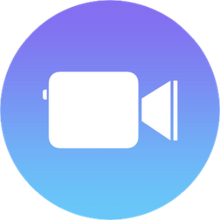Clips is quickly becoming one of my favorite iOS Apps. If you have not used Clips before, please feel free to check out my
tutorial. Here are three ways you may want to consider using this App:
1. Share New Year's Resolutions

I was working in a first-grade classroom this morning, where we used Clips as a tool for students to reflect on a book they read about New Year's Resolutions. Students used the camera on their iPad to take a picture of the book cover, a New Year's selfie, and a picture of a writing piece that they wrote.
Students recorded a summary of the book and read their writing piece, which described their New Year's Resolution for the school year. Once we were finished, we published the video to SeeSaw.
2. Set Goals
Why not use Clips as a way for students to develop a SMART Goal for the classroom? Remember that SMART Goals are Specific, Measurable, Attainable, Relevant and Timely.
Have students use the tool to reflect on their progress periodically. This could be a great way of engaging students in making and attaining goals. Students can publish their video to SeeSaw, Google Classroom, or another Learning Management System that you might use.
3. Summarize a Reading Assignment
Clips can be a great tool to summarize reading content. Whether you have a book with illustrations or not, it might be helpful for students to take several pictures related to key events in the story. Students can take pictures from the text or their own pictures and add a voiceover to describe the events. Students can use stickers, emojis, and posters to emphasize key points!
Conclusion:
Video is a powerful tool for our students to express their thoughts, opinions, and reflect on learning. Whether you are using Clips or another platform, it is important to have different ideas for using this valuable tool.













